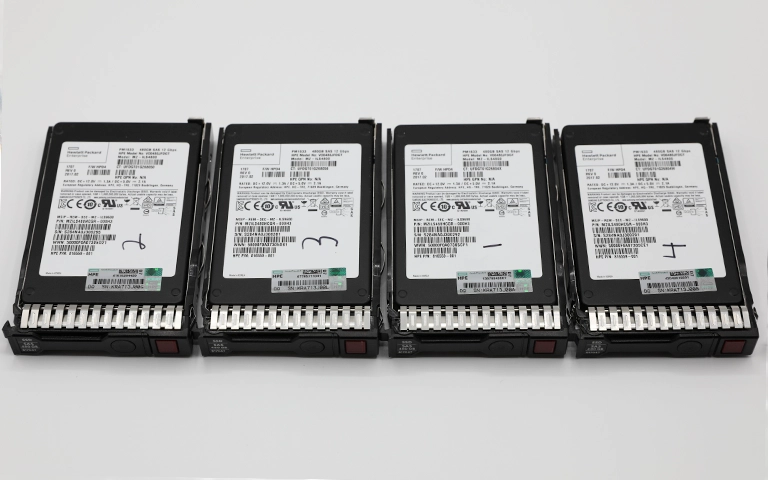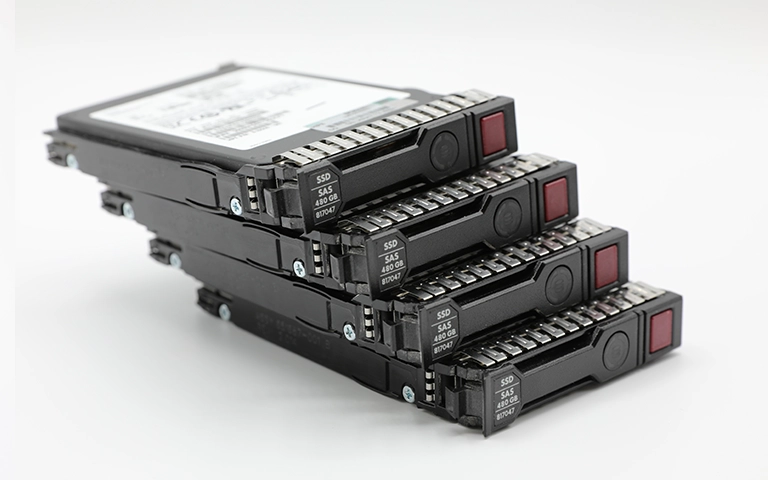When you need to store and manage important data, a Network Attached Storage (NAS) device provides a convenient, centralised platform. Whether for business operations or personal backups, a NAS lets you access files from multiple devices on the same network with minimal friction.
Reliability and performance hinge on how the disks inside the NAS are configured. This is where RAID comes in. By combining multiple drives, RAID balances speed, usable capacity and fault tolerance.
Selecting the best RAID for NAS can be the difference between smooth day-to-day running and costly downtime.
In this guide, you will learn how RAID works in NAS environments, the strengths of each RAID level, and how to choose the most dependable configuration for your workload.
We also explain what happens when a NAS RAID fails and how RAID Recovery Services can help you recover data quickly and securely.

Understanding RAID in NAS Systems
RAID, or Redundant Array of Independent Disks, is a storage method that combines several physical drives into one logical pool to enhance reliability, performance, or both. In a NAS, data is written across multiple disks in patterns that vary by RAID level.
The primary objective is resilience. If a drive fails, the array can rebuild missing data from information held on the remaining disks, keeping access steady and reducing disruption for offices, creative teams, and households alike.
Most NAS platforms let you choose from several levels, each offering a different balance of speed, usable capacity, and protection. Grasping how these levels operate will help you select the best RAID for NAS based on your workload and risk profile.
Want a deeper dive into configurations and trade-offs? See our guide to NAS RAID options.
Common RAID levels for NAS
NAS platforms support several RAID levels, each with a distinct trade-off between throughput, usable capacity, and resilience. Below are the configurations you will encounter most often when setting up a NAS and choosing the best RAID for NAS.
RAID 0 stripes data across multiple disks to boost read and write performance. There is no fault tolerance. If a single disk fails, the entire array is lost. Use only for temporary or non critical workloads.
RAID 1 writes identical copies of data to two or more disks. It offers strong redundancy but reduces usable capacity because each block is duplicated. Suitable when protection takes precedence over space.
RAID 5 uses block level striping with distributed parity. It delivers good read speeds and efficient capacity utilisation, and is a popular choice for home offices and small businesses. Learn more about its reliability in our detailed comparison RAID 5 vs RAID 6.
RAID 6 is similar to RAID 5 but stores two parity blocks. The array can survive two simultaneous disk failures, improving availability where uptime is critical.
RAID 10, also called RAID 1 plus 0, mirrors pairs of disks and stripes across those mirrors. You get fast performance and strong protection, making it a sound fit for heavy workloads and business critical data.
To learn about other RAID structures and how they differ, you can explore our overview of types of RAID.

Comparing RAID Levels for NAS Performance
Selecting the right level means weighing redundancy, throughput, and capacity utilisation. Use this snapshot to benchmark options when choosing the best RAID for NAS.
If you are comparing simpler disk arrangements, learn more about JBOD vs RAID to see how basic pooling differs from structured arrays.
Factors to Consider Before Choosing a RAID Setup
Selecting the best RAID for NAS hinges on clear requirements. Define how you will use the system, then align configuration to performance, capacity, and protection priorities.
Storage capacity requirements: Forecast current and near term data growth. Mirrored arrays such as RAID 1 and RAID 10 halve usable space, so plan headroom accordingly.
Number of drives available: RAID 5 needs at least three disks, RAID 6 needs four. Your drive count may narrow viable options from the outset.
Performance needs: Large media files, VMs or video editing benefit from RAID 0 or RAID 10. For general file serving, RAID 5 or RAID 6 usually provide the best balance of speed and efficiency.
Data protection priority: If uptime and resilience are critical, prefer RAID 1, RAID 6 or RAID 10. These tolerate one or two disk failures without losing data.
Budget and scalability: Higher redundancy and more disks raise costs. Consider enclosure bays, future expansion paths, and rebuild times as arrays grow.
Want the full picture on controller impact and throughput? Learn more about software RAID vs hardware RAID to see how implementation influences performance and reliability.

What happens when RAID fails in a NAS
Redundancy reduces risk, but no array is fail proof. NAS RAID can still suffer data loss due to gradual drive wear, controller faults, firmware issues, or incorrect rebuild attempts. If one or more disks fail, you may see missing volumes, degraded performance, or an array that will not mount.
A common misstep is to replace disks and trigger a rebuild before securing the existing data. This can overwrite parity, corrupt metadata, and turn a recoverable incident into permanent loss. Understanding how RAID behaves under fault conditions helps, but safe recovery typically requires specialist tooling and controlled handling.
At RAID Recovery Services, we specialise in recovering data from failed NAS arrays including RAID 5, RAID 6, and RAID 10. Each disk is imaged in a controlled laboratory environment to preserve evidence, stabilise failing media, and rebuild the array virtually without introducing further risk.
For deeper context on symptoms and remediation, visit our detailed article on NAS failure and recovery. To understand the pitfalls of rebuilds, learn more about potential RAID rebuild data loss risks.
Fast turnaround times for business-critical data
Choosing the best RAID for your NAS
The right configuration depends on what you value most in your NAS: speed, redundancy, or capacity. If performance is the priority, RAID 10 delivers high throughput with strong protection. Many small businesses adopt RAID 5 for an efficient balance of space and resilience. Enterprises often select RAID 6 for tolerance of two concurrent drive failures and steadier uptime.
There is no single setup that suits every environment. The ideal level depends on storage needs, workload profile, and reliability targets over time. A short planning exercise now will reduce the risk of unexpected data loss and help maintain consistent performance.
If your NAS RAID is failing or showing alerts, engage a specialist immediately.
RAID Recovery Services provides professional recovery for all NAS brands and RAID configurations. Our engineers diagnose issues, secure your data, and restore access quickly and safely.

Trust the experts with proven results
Frequently Asked Questions
What is the best RAID level for a NAS device?
There is no single best option. For most small to medium businesses, RAID 5 offers a solid balance of speed, usable capacity, and protection. If you need stronger resilience or higher performance, RAID 6 or RAID 10 are better choices. Use your workload and risk tolerance to decide the best RAID for NAS in your environment.
Can I use RAID 0 for my NAS?
Yes, but it is risky. RAID 0 delivers excellent throughput with zero redundancy. If any drive fails, all data is lost. It should be reserved for temporary or non critical storage, never for important files.
What happens when a NAS RAID fails?
You may see missing volumes, corrupted data, or a degraded array that will not mount. Causes include failing disks, controller issues, power events, and rebuild errors. Stop using the system and seek professional help to avoid overwriting recoverable data.
Can I mix drives of different sizes in a NAS RAID?
Usually, yes. Most arrays will operate, but effective capacity is limited by the smallest disk. For predictable performance and reliability, match models, sizes, and firmware where possible.
How can I prevent RAID failure in a NAS?
Monitor SMART health, replace weak disks promptly, keep firmware current, and maintain verified off site backups. If a drive fails, avoid ad hoc rebuilds. Engage a specialist to safeguard parity and metadata.